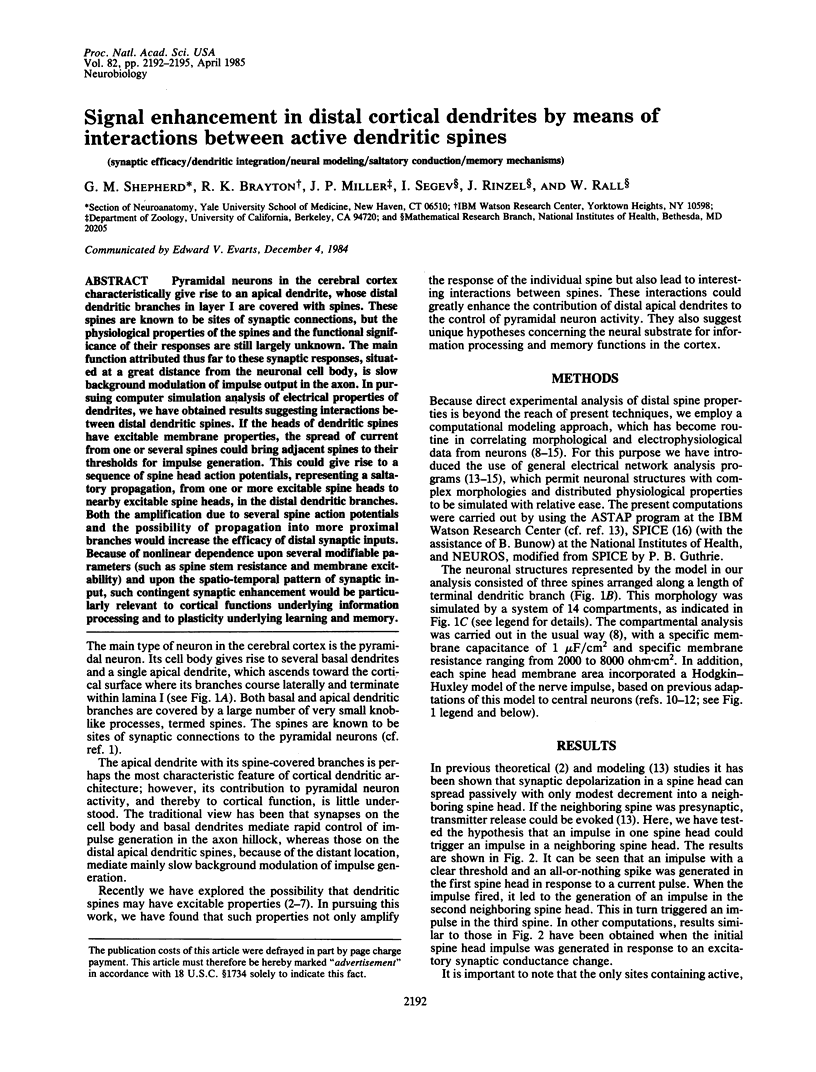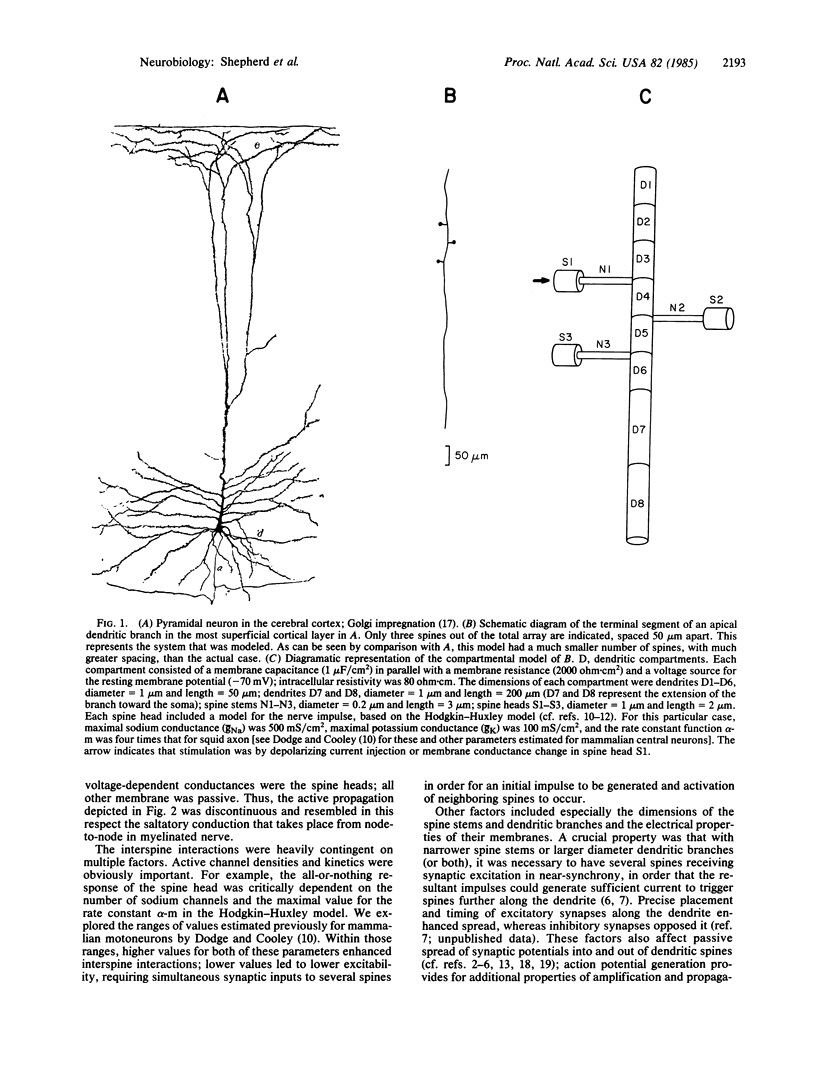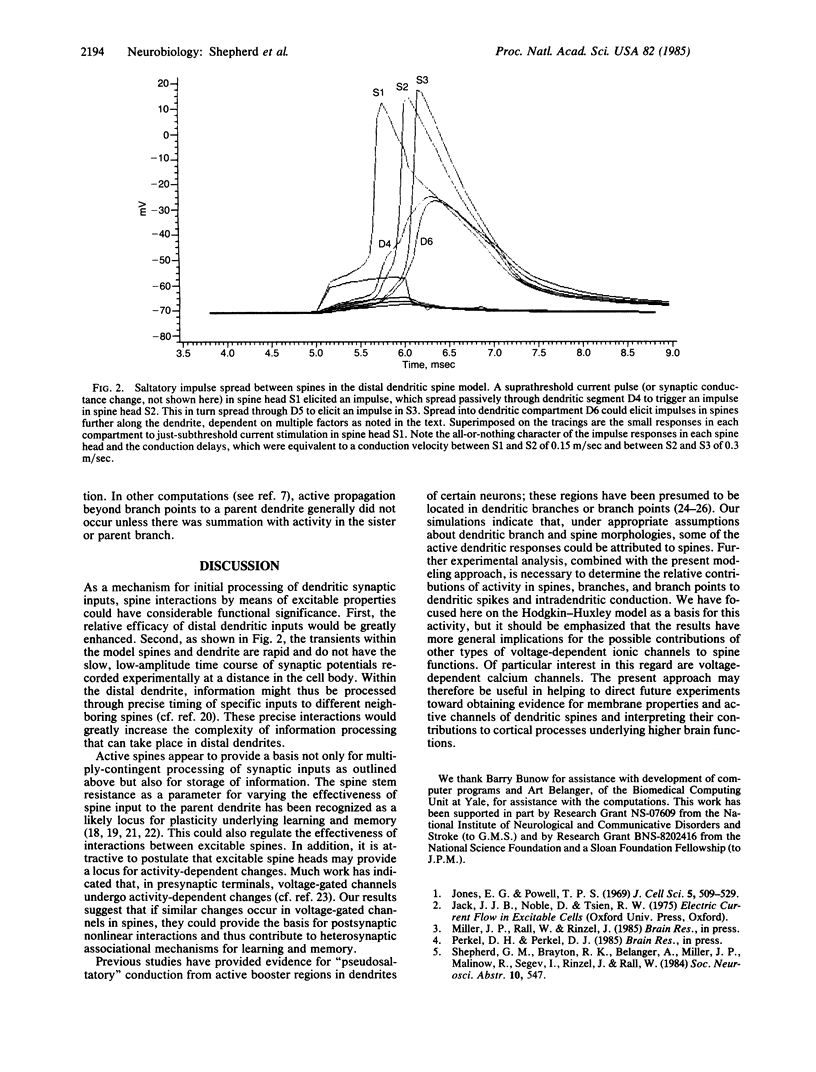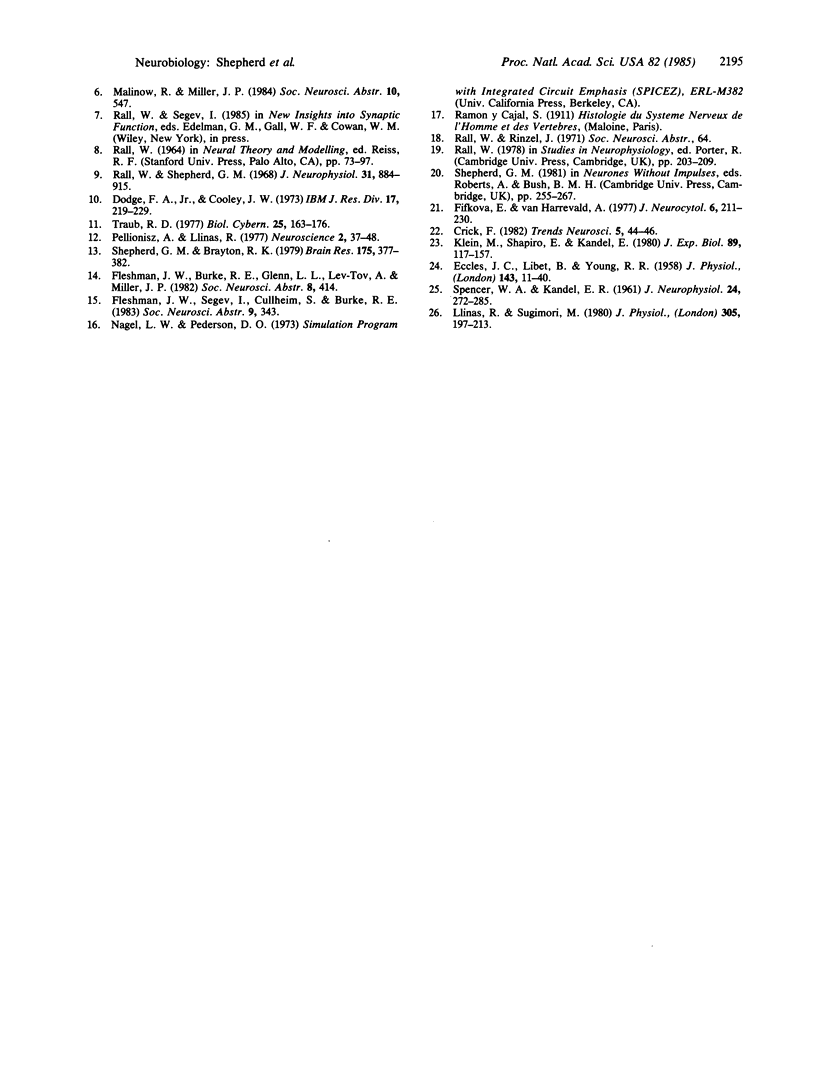Abstract
Pyramidal neurons in the cerebral cortex characteristically give rise to an apical dendrite, whose distal dendritic branches in layer I are covered with spines. These spines are known to be sites of synaptic connections, but the physiological properties of the spines and the functional significance of their responses are still largely unknown. The main function attributed thus far to these synaptic responses, situated at a great distance from the neuronal cell body, is slow background modulation of impulse output in the axon. In pursuing computer simulation analysis of electrical properties of dendrites, we have obtained results suggesting interactions between distal dendritic spines. If the heads of dendritic spines have excitable membrane properties, the spread of current from one or several spines could bring adjacent spines to their thresholds for impulse generation. This could give rise to a sequence of spine head action potentials, representing a saltatory propagation, from one or more excitable spine heads to nearby excitable spine heads, in the distal dendritic branches. Both the amplification due to several spine action potentials and the possibility of propagation into more proximal branches would increase the efficacy of distal synaptic inputs. Because of nonlinear dependence upon several modifiable parameters (such as spine stem resistance and membrane excitability) and upon the spatio-temporal pattern of synaptic input, such contingent synaptic enhancement would be particularly relevant to cortical functions underlying information processing and to plasticity underlying learning and memory.
Full text
PDF



Selected References
These references are in PubMed. This may not be the complete list of references from this article.
- ECCLES J. C., LIBET B., YOUNG R. R. The behaviour of chromatolysed motoneurones studied by intracellular recording. J Physiol. 1958 Aug 29;143(1):11–40. doi: 10.1113/jphysiol.1958.sp006041. [DOI] [PMC free article] [PubMed] [Google Scholar]
- Fifková E., Van Harreveld A. Long-lasting morphological changes in dendritic spines of dentate granular cells following stimulation of the entorhinal area. J Neurocytol. 1977 Apr;6(2):211–230. doi: 10.1007/BF01261506. [DOI] [PubMed] [Google Scholar]
- Jones E. G., Powell T. P. Morphological variations in the dendritic spines of the neocortex. J Cell Sci. 1969 Sep;5(2):509–529. doi: 10.1242/jcs.5.2.509. [DOI] [PubMed] [Google Scholar]
- Klein M., Shapiro E., Kandel E. R. Synaptic plasticity and the modulation of the Ca2+ current. J Exp Biol. 1980 Dec;89:117–157. doi: 10.1242/jeb.89.1.117. [DOI] [PubMed] [Google Scholar]
- Llinás R., Sugimori M. Electrophysiological properties of in vitro Purkinje cell dendrites in mammalian cerebellar slices. J Physiol. 1980 Aug;305:197–213. doi: 10.1113/jphysiol.1980.sp013358. [DOI] [PMC free article] [PubMed] [Google Scholar]
- Pellionisz A., Llinás R. A computer model of cerebellar Purkinje cells. Neuroscience. 1977;2(1):37–48. doi: 10.1016/0306-4522(77)90066-5. [DOI] [PubMed] [Google Scholar]
- Rall W., Shepherd G. M. Theoretical reconstruction of field potentials and dendrodendritic synaptic interactions in olfactory bulb. J Neurophysiol. 1968 Nov;31(6):884–915. doi: 10.1152/jn.1968.31.6.884. [DOI] [PubMed] [Google Scholar]
- Shepherd G. M., Brayton R. K. Computer simulation of a dendrodendritic synaptic circuit for self- and lateral-inhibition in the olfactory bulb. Brain Res. 1979 Oct 19;175(2):377–382. doi: 10.1016/0006-8993(79)91020-5. [DOI] [PubMed] [Google Scholar]
- Traub R. D. Motorneurons of different geometry and the size principle. Biol Cybern. 1977 Feb 7;25(3):163–176. doi: 10.1007/BF00365213. [DOI] [PubMed] [Google Scholar]


